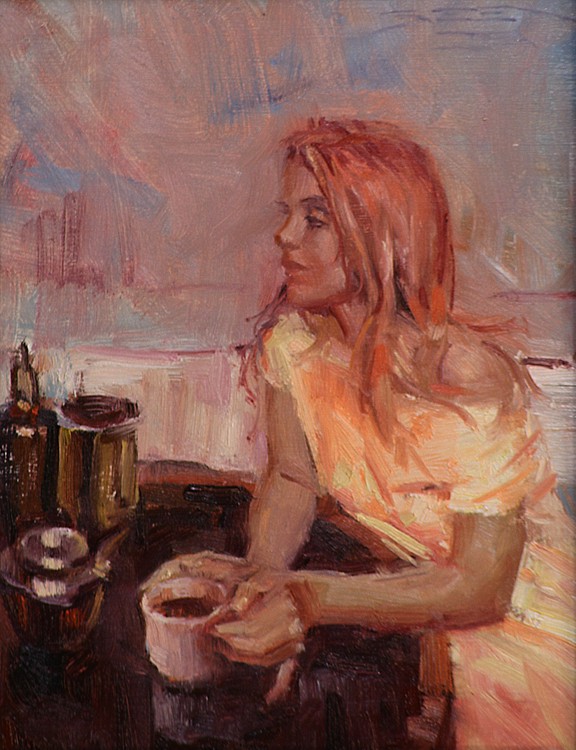
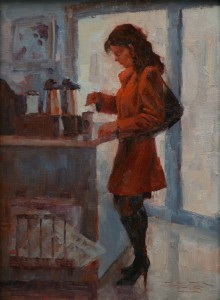 Or “Who’s that creepy guy over there taking pictures?” Omm, that would be me. Coffee shops are wonderful places to people watch and get some 21st century painting material. It’s amazing how coffee has become such an integral part of our modern existence, and how, in turn, people relate to these types of scenes. My favorite paintings of this subject by other painters are always handled loosely. I think it’s so important to capture the emotion of a place, and the feeling of the subject rather than getting too hung up on perfectly rendering the details. Here
Or “Who’s that creepy guy over there taking pictures?” Omm, that would be me. Coffee shops are wonderful places to people watch and get some 21st century painting material. It’s amazing how coffee has become such an integral part of our modern existence, and how, in turn, people relate to these types of scenes. My favorite paintings of this subject by other painters are always handled loosely. I think it’s so important to capture the emotion of a place, and the feeling of the subject rather than getting too hung up on perfectly rendering the details. Here 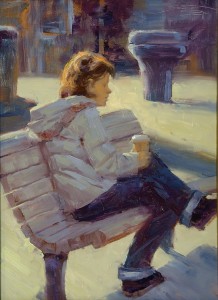 are a couple paintings I did from photos I took on my last venture to Denver, CO.
are a couple paintings I did from photos I took on my last venture to Denver, CO.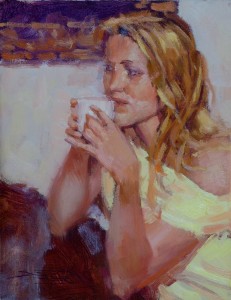
- HOME
- EVENTS
- ARTWORK
- TRADE UP
- OIL PAINTINGS
- FUNKBUTTAH
- GEAR 4 PAINTING
- EDUCATIONAL
- THE ARTIST
Tag Archives: Figurative
Coffeeshop Fun
Submitted to the Oil Painters of America Show in Santa Fe, NM.
I recently submitted a couple images in to the 18th annual Oil Painters of America show. The thing with this show is that only one of the paintings can even end up in it, and the chances of that happening, given the sheer amount of entries, is very unlikely. But I entered the following paintings anyway because it is such a prestigious show and I  really admire the judge’s work.
really admire the judge’s work.
The judge for the show is Kevin Macpherson(click on the link to see his 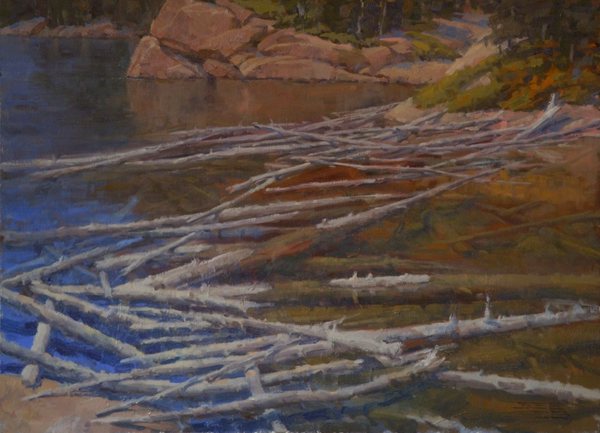 work) who is a very well known landscape painter. I’ve got both of his books and have read them cover to cover several times. The books are pictured at left and you can link up to buy them by clicking on them as well. The books are,”Landscape Painting Inside and Out,” and
work) who is a very well known landscape painter. I’ve got both of his books and have read them cover to cover several times. The books are pictured at left and you can link up to buy them by clicking on them as well. The books are,”Landscape Painting Inside and Out,” and  “Fill Your Oil Paintings With Light and Color.” He writes about painting in a way that is easy to understand and gives a lot of examples to further illustrate the concepts. Another thing about Kevin that I really like is that he paints with a limited pallet.
“Fill Your Oil Paintings With Light and Color.” He writes about painting in a way that is easy to understand and gives a lot of examples to further illustrate the concepts. Another thing about Kevin that I really like is that he paints with a limited pallet.
A “limited pallet” refers to the pallet of colors that each artist chooses to paint with. Some artists go with a wide variety of colors to put out when painting, others use fewer colors. The latter is called working with a “limited 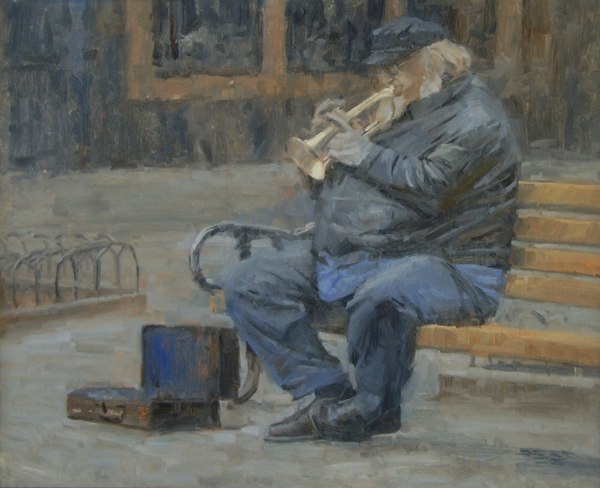 pallet”, but it is actually more liberating than limited. Obviously, a painter doesn’t go out in to nature with every color in the Universe from “Snow in the Shadows Blue” to “Ponderosa Pine Needle in the Afternoon Light Green” all bottled up neatly in tubes. A painter has to pick and choose his colors and brands carefully in order that they can paint a variety of subjects by mixing the appropriate color from what choices of paint they make. If a painter is painting representationally, then they will need at least the three primary colors and white. Since I do a lot of on-location painting, and hiking up to five or six miles in to a place with my easel is part of the painting process, I use a “limited pallet” of seven colors. While my specific pallet deviates a bit from other limited pallets, I find it to be the most versatile for me. In my choices every color better be a workhorse, or it gets “fired.” (For more information on color and color theory, my pallet of colors, the brushes I use, some techniques I’ve found to be useful, etc. click HERE)
pallet”, but it is actually more liberating than limited. Obviously, a painter doesn’t go out in to nature with every color in the Universe from “Snow in the Shadows Blue” to “Ponderosa Pine Needle in the Afternoon Light Green” all bottled up neatly in tubes. A painter has to pick and choose his colors and brands carefully in order that they can paint a variety of subjects by mixing the appropriate color from what choices of paint they make. If a painter is painting representationally, then they will need at least the three primary colors and white. Since I do a lot of on-location painting, and hiking up to five or six miles in to a place with my easel is part of the painting process, I use a “limited pallet” of seven colors. While my specific pallet deviates a bit from other limited pallets, I find it to be the most versatile for me. In my choices every color better be a workhorse, or it gets “fired.” (For more information on color and color theory, my pallet of colors, the brushes I use, some techniques I’ve found to be useful, etc. click HERE)
So we’ll see what happens, and you can bet I’ll keep you posted. I should know if I got a painting in the show by the end of February.
Painting old trucks is like painting the figure
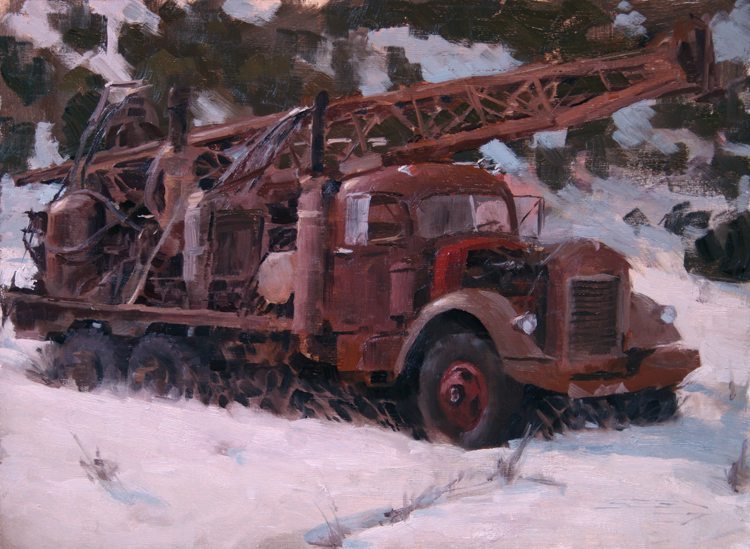 Old trucks, at least pre 50’s era, are the best subjects.You have to engage the shapes and their relationship to one another in a very high-draftsmanship state of mind or your painting, remarkably quickly, starts looking like something out of a Dr. Seuss book. Where you can have a lot of fun is in the color shifts and the depiction of the curvy forms. They also frequently reside alongside piles of junk and old sheds and what-not that can add to the fun of the composition.
Old trucks, at least pre 50’s era, are the best subjects.You have to engage the shapes and their relationship to one another in a very high-draftsmanship state of mind or your painting, remarkably quickly, starts looking like something out of a Dr. Seuss book. Where you can have a lot of fun is in the color shifts and the depiction of the curvy forms. They also frequently reside alongside piles of junk and old sheds and what-not that can add to the fun of the composition.
With “The Parts Truck” painting above, one of the common comments was, “It looks so detailed.” Which means that I pulled it off, because I try to persuade the viewer’s eye into thinking that it’s detailed with edges, value and color changes placed in very specific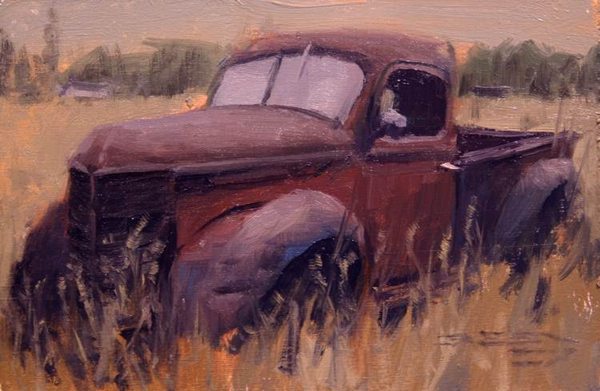 spots. However, if you click on the image to see the closeup, you’ll see that the detail is in your own visual experience or vocabulary of having seen similar things in your lifetime and filling in the gaps of my depiction.
spots. However, if you click on the image to see the closeup, you’ll see that the detail is in your own visual experience or vocabulary of having seen similar things in your lifetime and filling in the gaps of my depiction.
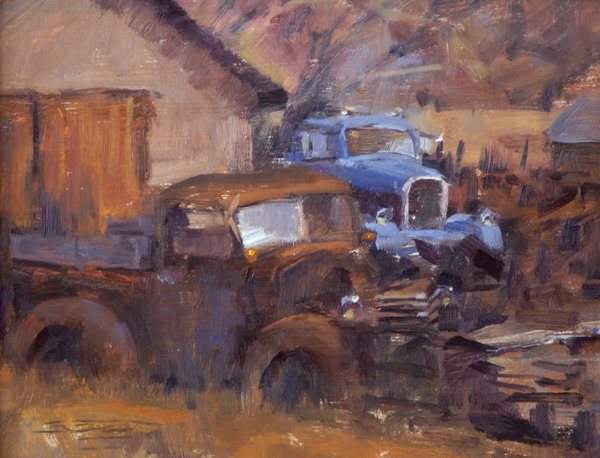 I find it very intriguing when looking at master works such as John Singer Sargent’s in which I am personally engaged in the finishing of the painting. Where the master has described a scene loosely and has meant for the viewer to see past merely the “support group” of the piece to the important part, or “point” of the painting. It’s as if the artist is following up a brief description of a place with, “You know what I mean?” and yes, John, we do know what you mean. And THANK YOU for not going on and on about it. There is craftsmanship and thought behind an economy of brushstrokes.
I find it very intriguing when looking at master works such as John Singer Sargent’s in which I am personally engaged in the finishing of the painting. Where the master has described a scene loosely and has meant for the viewer to see past merely the “support group” of the piece to the important part, or “point” of the painting. It’s as if the artist is following up a brief description of a place with, “You know what I mean?” and yes, John, we do know what you mean. And THANK YOU for not going on and on about it. There is craftsmanship and thought behind an economy of brushstrokes.
In this manner, painting a truck is not unlike painting a human model. 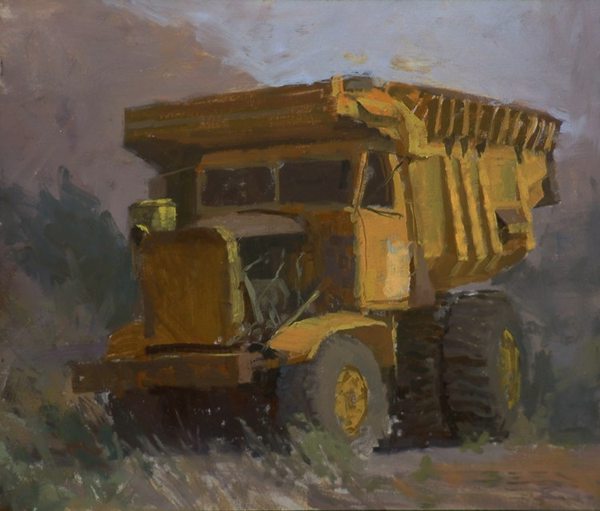 There is a necessity for high-draftsmanship, while there is much room for color and edge variation. Also, in describing the curvy forms, I will use very similar color and temperature shifts within the “local color” of the vehicle. One must be mindful also of the surface quality of the truck itself, whether the truck is rusty and beaten or well kept, rebuilt and shiny.
There is a necessity for high-draftsmanship, while there is much room for color and edge variation. Also, in describing the curvy forms, I will use very similar color and temperature shifts within the “local color” of the vehicle. One must be mindful also of the surface quality of the truck itself, whether the truck is rusty and beaten or well kept, rebuilt and shiny.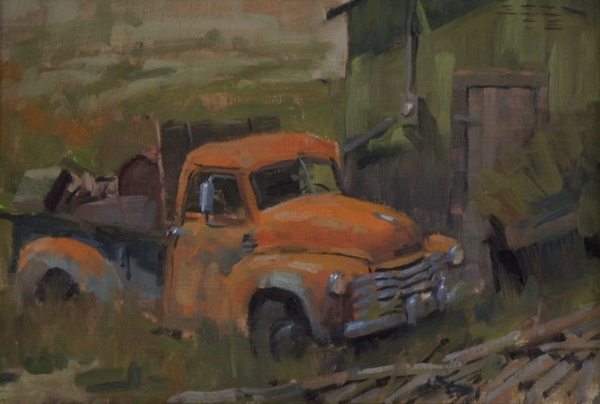
When I’m out on a reconnaissance for new subject matter, I keep my eyes peeled for older and preferably dilapidated items like trucks, barns, tractors, sheds, old mines, etc. Things with character make good subjects for paintings and the weathered look naturally brings the feeling of wisdom.

